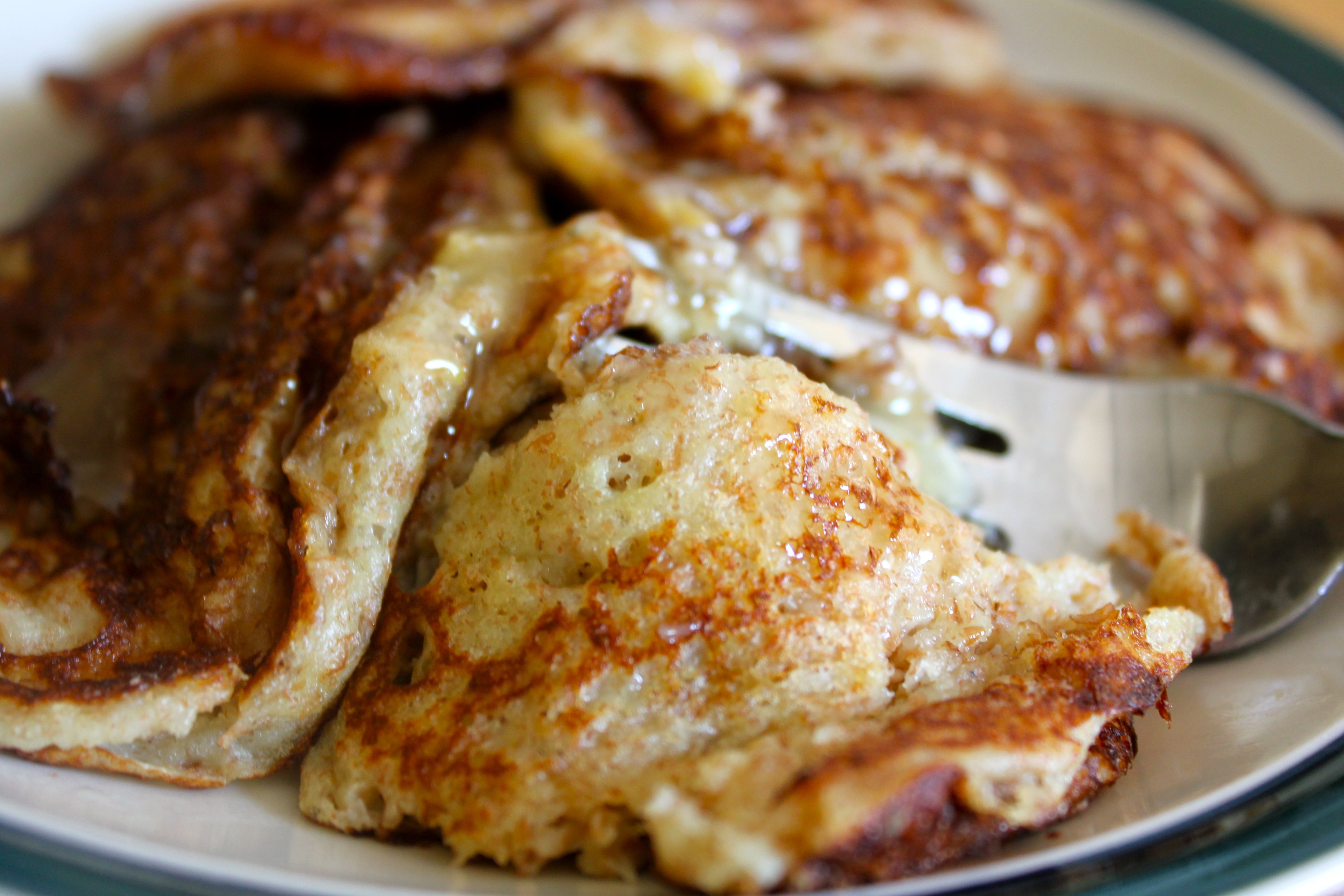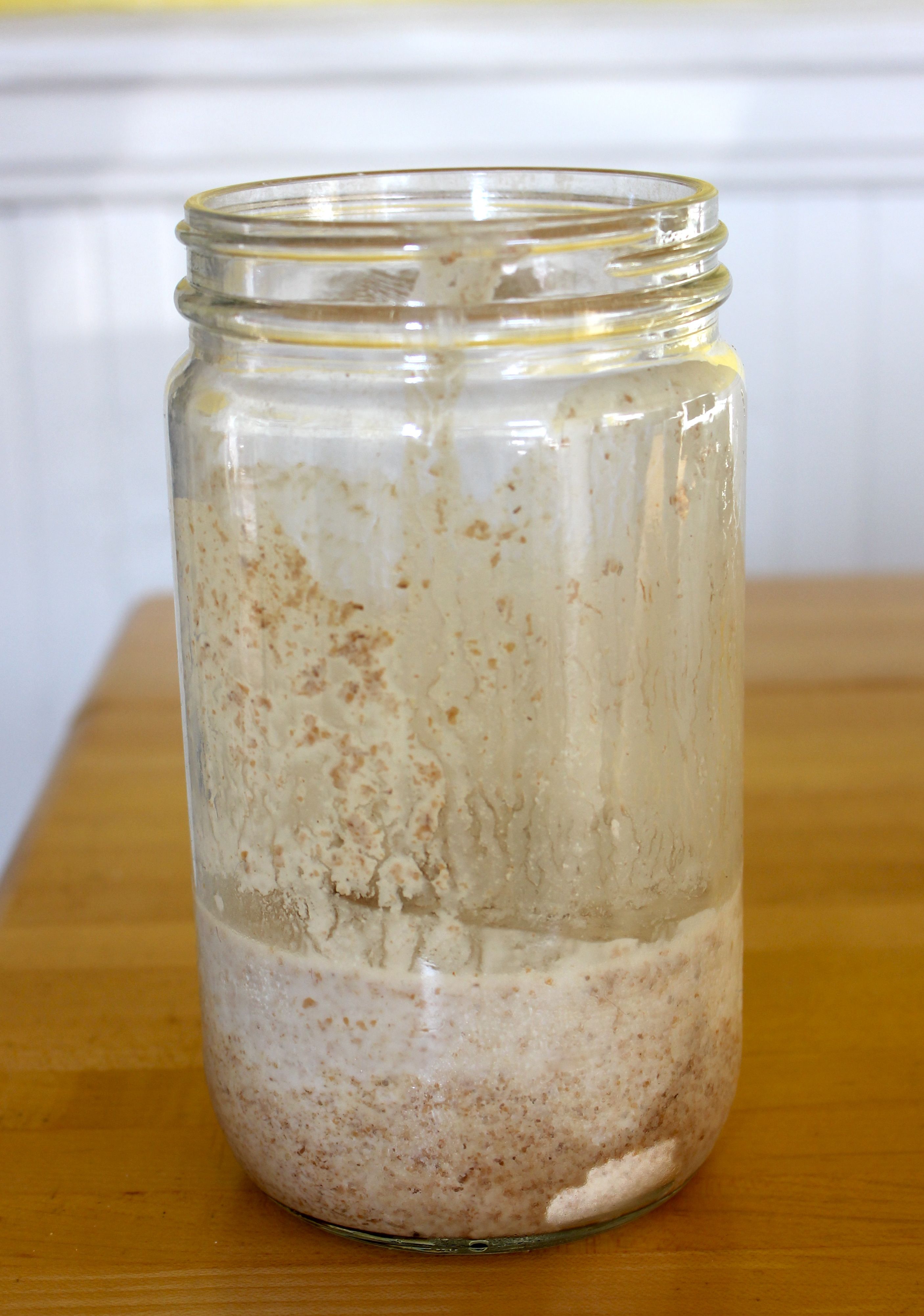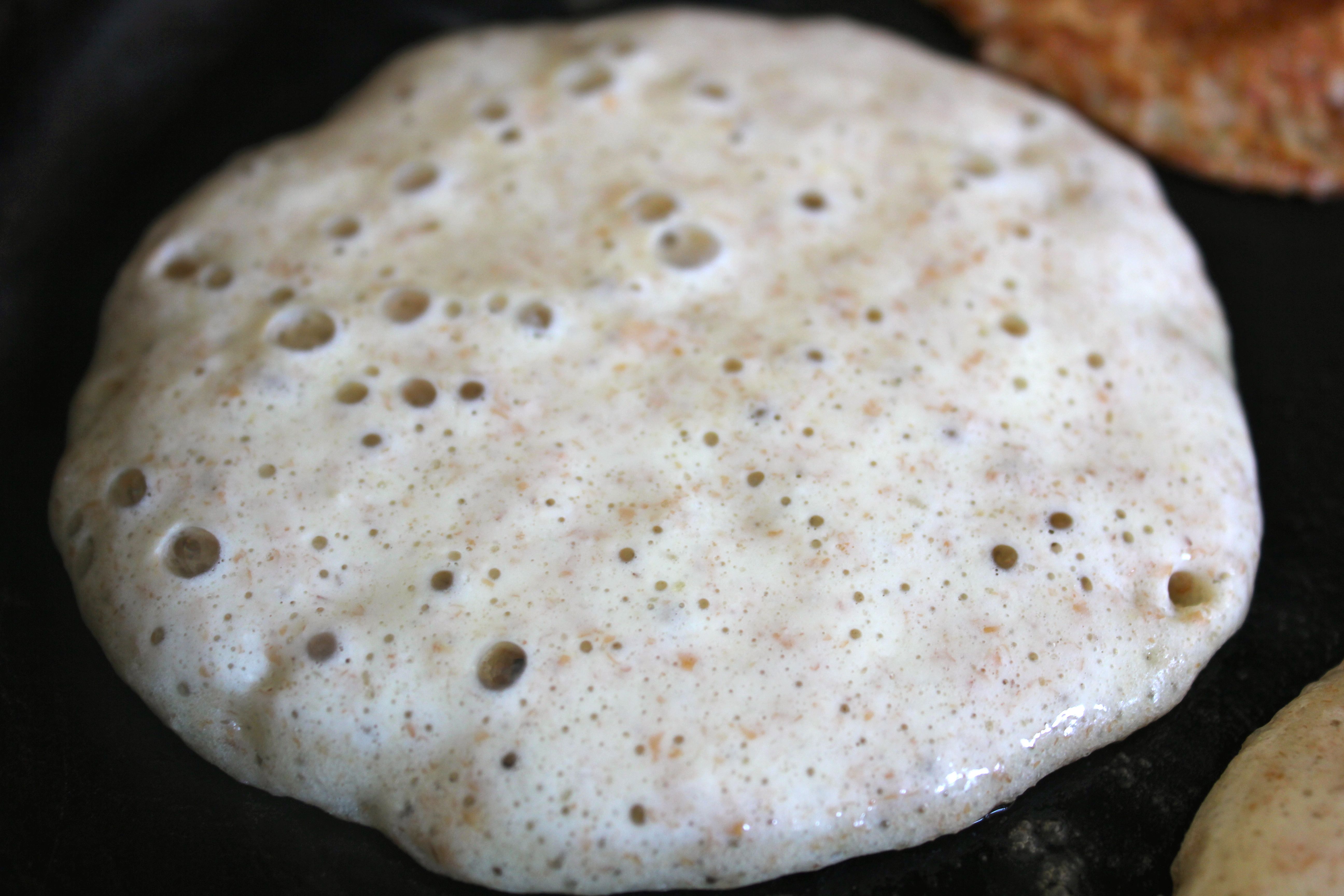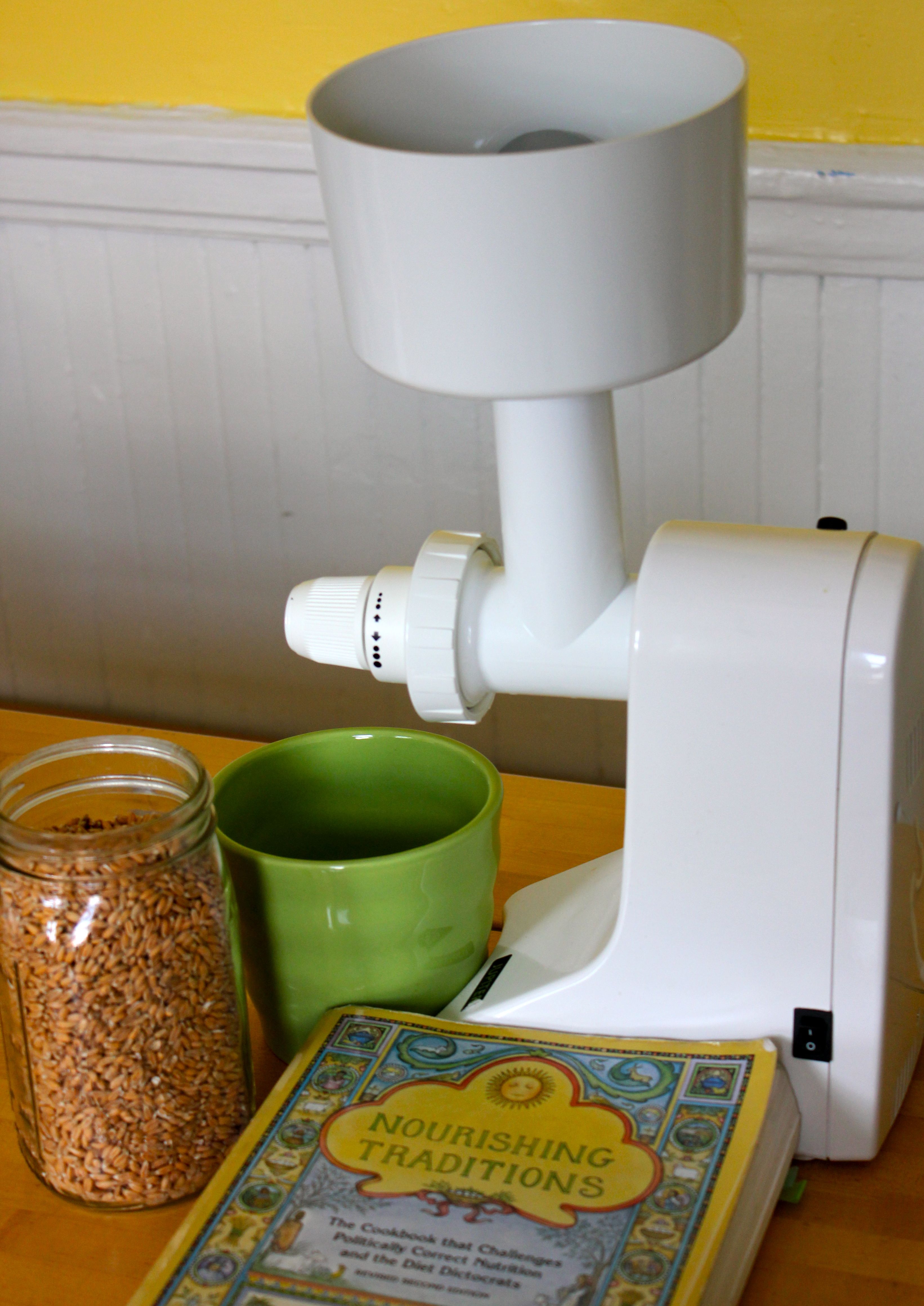Confused about grains? With all of the detailed information out there regarding the consumption of grains in the diet today, it is easy to become head-spinningly overwhelmed by this food group. Popular organizations tell us to eat a whopping nine to eleven “whole grain” servings a day, while other nutritional approaches strive for near total carbohydrate elimination. Not to mention, the rates of wheat allergy and gluten intolerance are rampant, causing distress about types of grains that are “good or bad,” “safe or dangerous.” You can go ahead and give a nice big sigh...but don't give up! In the midst of all of these theories, there is universal truth: grains must be soaked and treated well if they are going to be used. And one of the most shocking parts of it all? Properly preparing your grains is far easier than you might think. Give it a try with this sumptuous freshly ground Spelt Flour Pancake recipe from Nourishing Traditions.

The Bad Guys: Phytic Acid and Gluten
All grains contain phytic acid on the outer layer of the bran. This organic acid is part of a plant’s natural composition, acting to protect the bran until it has sprouted and had a chance to thrive. Phytic acid is thus intentionally difficult to digest and actually combines with minerals such as calcium, magnesium, copper, iron and zinc in the digestive tract to block their absorption. The resulting mineral deficiencies, gastric distress and bone loss illicited by frequent consumption of untreated phytic acid in whole grains, are detrimental to well-being and prompt a cascade of compounding health problems in the long term.
Some grains also contain gluten, a protein that is not easily processed by the human digestive mechanism. Grains such as wheat, spelt, kamut, barley and rye are high in gluten, while others do not have this protein in their make up (rice, corn, millet, and buckwheat for example). Wheat allergies, gluten intolerances, and celiac disease are conditions demonstrative of varying degrees of immune-response to gluten, which lead to massive inflammation and destruction throughout the body. Due to the hybridization, brutal processing and genetic modification of grains over the past century, these conditions are ubiquitous and spreading. If you fall somewhere on this spectrum, it is crucial for the integrity of body and mind to make dietary choices accordingly. Concerned you may have an intolerance? Check with your holistic practicioner and see Getting a Grip on Gluten Free Cooking for a bit more information.
Soaking and Fermenting Save the Day
Sally Fallon said it simply: "be kind to your grains, and your grains will be kind to you." Our ancestors traditionally engaged in soaking and fermenting grains before consumption, in an instinctive process that modern technology has proven vital to digestive health. By soaking grains in sour or cultured milk, buttermilk, or cream (or alternatively water and lemon juice/vinegar for those with allergies), enzymes that break down nasty phytic acids are activated. Additionally, the lactic acid and lactobacilli in sour milk products work to neutralize irritating starches, tannins and proteins (like gluten) during the soaking process, overall yielding grains that are both palatable, nutrient dense and more gentle to the human gastric system. This simple process works so efficiently that some individuals with intolerances have even been found to tolerate soaked, sprouted or fermented grain products without difficulty. However, be mindfully aware of your body’s state, and if you need to eliminate gluten, use proper alternatives to do so.
Pancakes with Freshly Ground Spelt Flour
If you do a lot of baking (or would like to), having a home grain grinder is essential. Personally, The Family Grain Mill has provided me with a way to reincorporate the nutrient value of particular beloved baked goods back into my diet, without acute or chronic digestive strain. Grains also go quickly rancid after grinding, so the ability to have fresh batches of flour on hand for a recipe is a convenient delight. The process of lacto-fermenting (as used in this particular recipe) allows whole meal flours to take on properties that make it a direct, easy substitute for many white flour recipes too. For this batch of pancakes I chose to use spelt, an ancient grain of the wheat family. It’s unique constitution allows for easy and rapid gluten breakdown during fermentation, but you may also use kamut or wheat as preferred. The whole process is quite simple, as you will see with this delicious recipe!
1. Grind 2 cups of flour using a grain mill. Simply add appropriate amount of spelt berries (or alternative) into the hopper, turn on grinder and wait! You may have to guide berries through grinder if they become built up.
2. Cover yielded flour with 2 cups buttermilk, kefir or yoghurt. Allow to soak in a warm place for 12-24 hours.

3. When the soaking is completed, stir in 2 eggs lightly beaten, 1/2 teaspoon sea salt, 1 teaspoon baking soda and 2 tablespoons melted butter to flour mixture. Thin to desired consistency with water and cook pancakes on hot oiled griddle or in a cast-iron skillet.

Pancakes will cook more slowly and the texture will be chewy, with a gratifying sour taste. Top with raw honey or maple syrup as desired, or add in a handful of fresh berries from the local farmer's market. You can also let pancakes dry out in a warm oven to save as a tasty snack for later!

